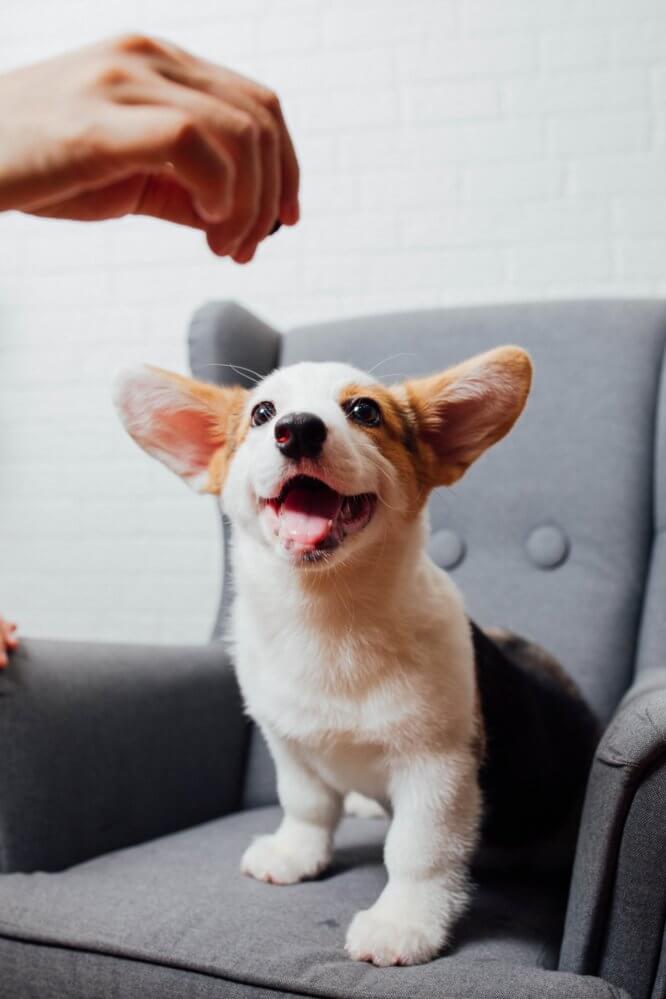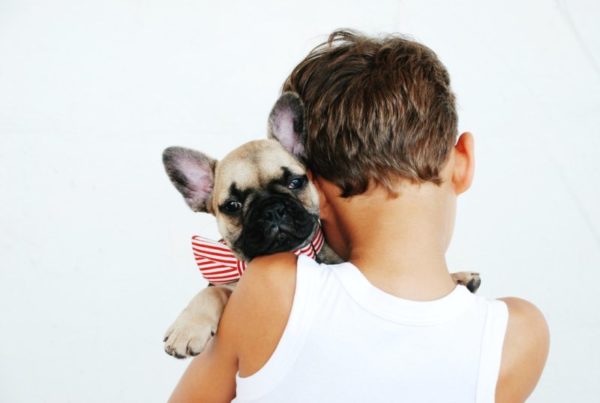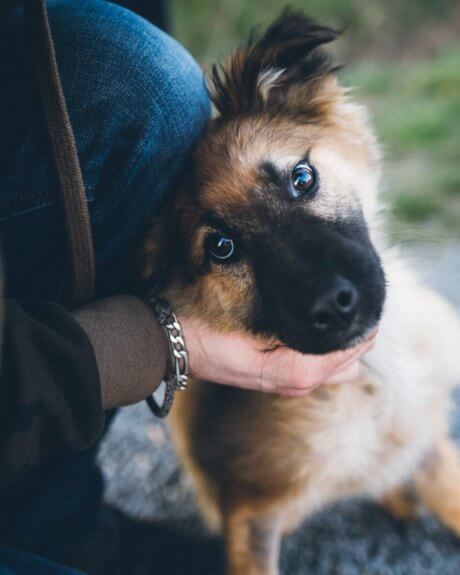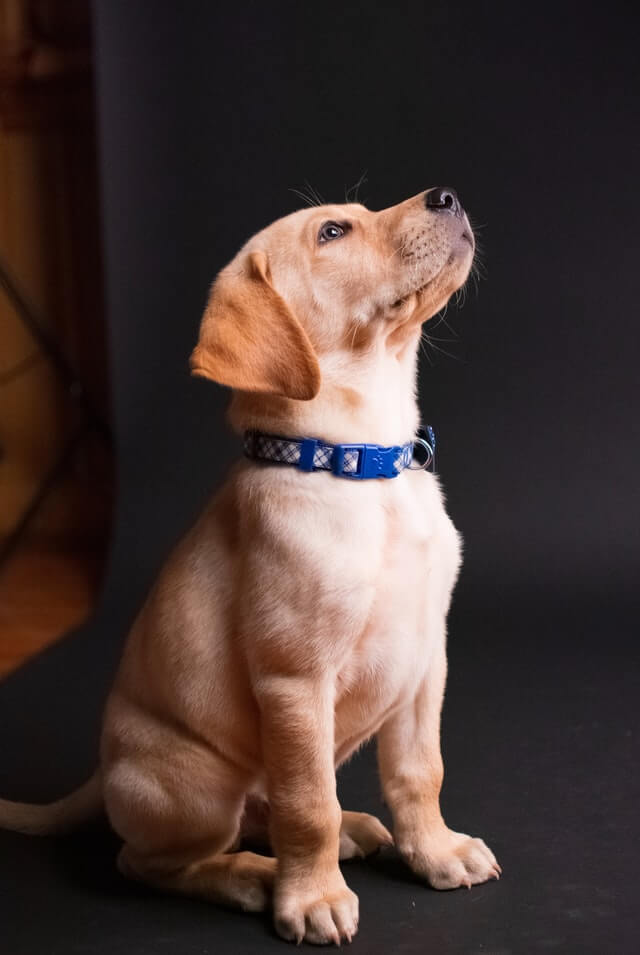The question – when does puppy poop become solid – comes from most new owners. Being concerned about your new puppy goes hand-in-hand with the excitement of getting one. You want to make sure your puppy has all his needs met.
Above all, you want to ensure that you’re on the path of raising a healthy and happy dog.
But what often happens is that owners get concerned about the look of the puppy’s stool. It’s normal for very young puppies to have loose stool.
There are also health indicators owners can find out about just by the look of a puppy’s poop.
We discuss this (and more) in this instructive article.
Healthy Puppy Poop Chart

Since you’re already reading this article, you may already be assuming the importance of healthy puppy poop.
For some of the owners, these smelly situations might be the most uncomfortable part of raising a dog. However, learning about puppy poop is an important part of keeping your dog’s health in check.
Owners can learn a lot from figuring out what a healthy puppy poop typically looks like.
This can help you identify if something is wrong with your puppy’s stool. That way, you’ll know if you don’t have to worry or if you should change something in your puppy’s diet.
Let’s take a look at the healthy puppy poop chart and discuss the differences in puppy stool more closely.
- Shape
It’s normal for young puppies to have softer stools, especially if they are still breastfeeding. This is because the shape and volume of puppy stool largely depend on their diet.
Since the very young puppies only drink milk, it’s very natural for them to still not have solid poop. This changes when the puppies get weaned from their mother.
From that point on, puppies develop solid stools. The healthy shape of puppy poop is in a firm shape of a log. The healthy poop can be soft too, but strong enough to get picked up when cleaning up.
You should only be concerned if your puppy’s stool gets too watery all of a sudden. It’s best to take the puppy to the vet in that case.
- Size
When it comes to the healthy size of the poop, this largely depends on the size of the meal the got ate.
If you are making sure the puppy is being breastfed regularly or eating regular meals after that period, you shouldn’t worry.
More often than not, the poop of the puppy will be the correct size, as it equals the meal the puppy ate.
Usually, when owners are concerned about their puppy’s stool, it’s not the size of the poop that concerns them.
- Consistency
As previously mentioned, the poop of the puppy should be easy to pick up when cleaning. This is because the puppies start developing denser poop after transferring to a stronger diet.
Pebble-like stool or a hard stool is bad as diarrhea. If you notice your puppy having constipation or hard stool, it’s time to change its diet. The constipated puppy either lacks fiber in the food or is dehydrated.
On the other hand, a stool that is too watery for some amount of time indicates a problem. It can be the case of allergy in certain foods, so you may want to change their diet. [1]
- Color
A perfectly healthy puppy poop is brown. However, you may notice your pup has a different colored stool, and this may concern you.
A yellow or orange poop may be a symptom of an underlying liver issue, so it’s best to phone the vet. [2]
Green poop may or may not be a cause for concern. Many puppies are curious and want to taste everything.
When a puppy eats too much grass, it may appear as green poop. However, sometimes this can indicate an underlying parasite problem or a gallbladder issue.
A pink or purple poop may indicate a problem with hemorrhagic gastroenteritis. [3]
Black poop may indicate that there is bleeding in the upper G tract.
A white poop is typically a symptom of calcium-rich meals. Usually, this isn’t a cause for concern as dogs eat a lot of bones.
- Contents
Dogs – especially smaller ones – are known to eat things that are not meant to be eaten. They love to explore the world around them and are often endlessly curious about how everything tastes.
This is why you should be cautious when first starting to walk your puppy. However, some suspicious things can appear in your puppy’s stool even if you took care of the puppy very well.
The most common one is seeing white dots or streaks in the puppy’s poop. This is a sign your puppy has worms, and it’s a very common one.
You shouldn’t worry about it too much. However, you should consult with the vet on future treatment and medications to give your puppy until this resolves.
Seeing red streaks in the poop can be a sign of the temporary small tear at the puppy’s bottom. However, seeing blood in their stool regularly requires more investigation.
Lastly, seeing fur in the puppy stool is also common. It is possible fur fell on the poop after your puppy pooped.
However, if you’re sure the puppy has pooped some fur, then this is a sign a puppy has previously eaten the fur. This is probably the case of a puppy over-grooming himself as a response to high stress and anxiety.
You should then investigate what causes this anxiety for your puppy and remove the cause of stress.
When Does Puppy Poop Become Solid With Age?

Puppy poop usually becomes solid once the puppy is weaned from its mother. This is also the time when you start feeding your puppy meals.
When does puppy poop become solid after weaning? Usually after your puppy has adjusted to the new diet. This poop won’t be as solid and consistent as it’s the case with the older dogs.
It does take some time for their stool to develop. That’s why it’s best to monitor their stool development to make sure everything is progressing as it should.
The weaning process typically begins when puppies are 3-4 weeks old. This is only the start of the process and puppies should not be separated from their mother if under 7 weeks old.
It’s during this time that your puppy poop should solidify.
Once that starts happening, it’s of crucial importance to still keep an eye on your puppy. Just because the puppy poop became solid, doesn’t mean the puppy is completely safe to eat anything.
Puppies are especially prone to parasites, and these can appear even after the puppy stool became solid.
Other than that, it’s important to not begin feeding your puppy potentially dangerous foods, such as spoiled meat.
Start feeding your young puppy several small meals per day. After about 4 months, you should reduce the feeding amount to 3 times per day.
Shortly after that, puppies get quickly adjusted to being fed twice per day. Finally, a grown dog is usually fed once per day.
Puppy Poop Soft and Smelly

There are also other reasons as to why your puppy’s stool may be overly soft and smelly. We will now offer a list of possible causes.
As you read, note that some of these situations last shortly and are usually resolved by themselves. Other ones require you to change the puppy’s diet.
Finally, some of these do require medical treatment and prior consultation with the vet. Thankfully, these treatments are usually only temporary when it comes to puppies.
- Excitement
An excited puppy is a happy puppy. But sometimes, excited puppies may have loose stool or diarrhea after something exciting happens.
This can happen often with young puppies and is not a cause for concern. Usually, their stool hardens as soon as the excitement goes away.
- Stress
Stressful situations have similar effects on the puppy as the exciting ones. The puppy can become stressed when separated from the mother too soon.
Oftentimes, puppies also get stressed when changing their environments. This can include a first car ride, a change in location, and even meeting new owners.
- Vet visits
Vet visits are also a type of stressful situation for your puppy. It may not like being in a different location that is unknown to him. Also, a puppy that just got accustomed to its owner may feel particularly attached to them. Being handled by a stranger can be stressful.
- Parasites
It may be challenging to accept that your puppy’s intestines got affected by parasites. However, please note that this is quite common. Puppies often require vaccines and sometimes additional treatment to get rid of parasites.
Parasites can cause your puppy’s stool to become runny or the poop can have blood or spots in it. [4]
- Foreign objects
Finally, we can’t stress enough how often it happens for puppies to eat what they shouldn’t. Puppies are very curious and will try to chew your shoes, or even eat poop.
They may even start chewing on wooden surfaces – if you let them. This is especially the case when their little teeth start growing.
However, it’s very important to not allow these things. Allow your dog to chew on its toys and not on your furniture or shoes.
If you don’t set those clear boundaries from the beginning, you may raise a stubborn dog.
Objects that are not easily or at all digestible may get stuck in your dog’s stomach. This can result in diarrhea.
If you suspect this is the case, it’s best to take your puppy to the vet and immediately do an X-ray.
Puppy Loose Stool – Overfeeding Symptoms

If you are a completely new puppy owner, you may want to consult with a vet or other owners on ways to feed your puppy.
If you don’t do this, and you just do it whenever you feel like it, this will not end well.
Like human babies, puppies are quite young and require constant attention. It’s important to keep an eye on them as often as you can and monitor them.
By monitoring them we mean tracking your puppy behavior and eating habits.
Have you ever heard of the term puppy eyes? Long story short, your puppy may charm you into you feeding it more than you should.
This usually ends up in vomiting, but can end up with diarrhea or loose stool too. If this comes with bloatedness and lethargy after every meal, then this is a sure sign you’re overfeeding your puppy.
A puppy that is constantly overfed is the one that is going to end up obese. An obese dog can suffer from many health problems, such as joint pain, heart disease, or even cancer. [5]
Lastly, soft poop is not always a symptom of overeating. Diarrhea or loose stool may also result in feeding your dog the food it shouldn’t eat.
Read on about feeding dogs passion fruit, mayonnaise, or horseradish.
What Should 8 Week Old Puppy Poop Look Like?

At 8 weeks old, puppy poop should start to become more and more solid.
Usually, around this time is when a puppy is already weaned from its mother. That means a puppy has already started eating more solid foods.
However, a puppy that is 8 weeks old is still quite young. That means that it may or may not be adjusted to the new diet consisting of more solid foods.
If you notice that your dog still has loose stool or diarrhea at this age, it can be several things.
The puppy may have parasites, as they are prone to get those at this age.
Also, the puppy may be adjusting to the new surroundings, and the stress of it all can cause loose stool.
Finally, it’s quite normal for puppies of this age to not have a solid poop all the time. It’s even normal for their poop to change throughout the day.
This will change over time as they grow up and adjust to the hard food.
It’s always best advised to take your puppy to a routine checkup at the vet to see if everything is progressing as it should.
What Can I Do to Solidify Puppy Poop?
The best thing you can do for your puppy is to have them adjust to the solid foods gradually. Think about it – a puppy that is fed milk and is suddenly starting to eat puppy food will certainly react to it.
That’s why it’s best to have your puppy gradually adjusted to puppy food. When the weaning time gets near, start feeding your puppy solid foods little by little.
Your puppy will adjust better to it if it eats it along with the milk. Then, when the puppy is around 5 to 8 weeks old, it’s time for it to get fed puppy food.
As a new dog owner, you should research what foods your puppy may or may not eat, such as mackerel, jicama, or truffle.
A similar rule applies when your dog gets older too. If your dog is used to eating wet food, gradually start feeding it more hard foods to solidify its stool.
Certain foods are also known to solidify dogs’ stool. [6] Foods such as yogurt contain probiotics, which can help solidify your dog’s stool.
Puppies are very vulnerable and their sensitivity to foods can change over time.
The best thing you can do as a dog owner is to make sure you provide your puppy with quality foods. Also, always make sure to keep your puppy hydrated – especially during walks!
If you follow this simple advice, the rest will take care of itself.
When Should You Worry About Puppy Diarrhea?

Now – you read all of the symptoms but you’re still not sure if you’re overthinking this problem. We get you, as raising a puppy can sometimes even be stressful.
If you still aren’t quite sure of the underlying problem, check for the dog’s environment. Sometimes a puppy simply won’t have good digestion because of a stressful environment or not enough exercise.
Make sure that you’re allowing your pet to run around and play. This is healthy and very beneficial for the development of the puppy.
Also, make sure to take the puppy on regular walks – but only after it’s safe to do so!
If you notice any big change in your dog’s behavior, along with infrequent and loose stool, then you should take action. This may be a sign of an underlying health issue and it’s best to check it with the vet.
Those behavior patterns include unwillingness to play, lethargy, or even aggression.
If you happen to have lawn mushrooms, you have to be especially cautious as they can kill even older dogs.
The Takeaway
We hope we answered your question of when does puppy poop become solid.
The bottom line is – it’s completely normal for puppies to have loose stool from time to time. This is especially the case if they are still adjusting to puppy food and new surroundings.
It’s after you notice some other changes when you should quickly take action.
Taking your puppy to a routine checkup at the vet is a nice place to start.
